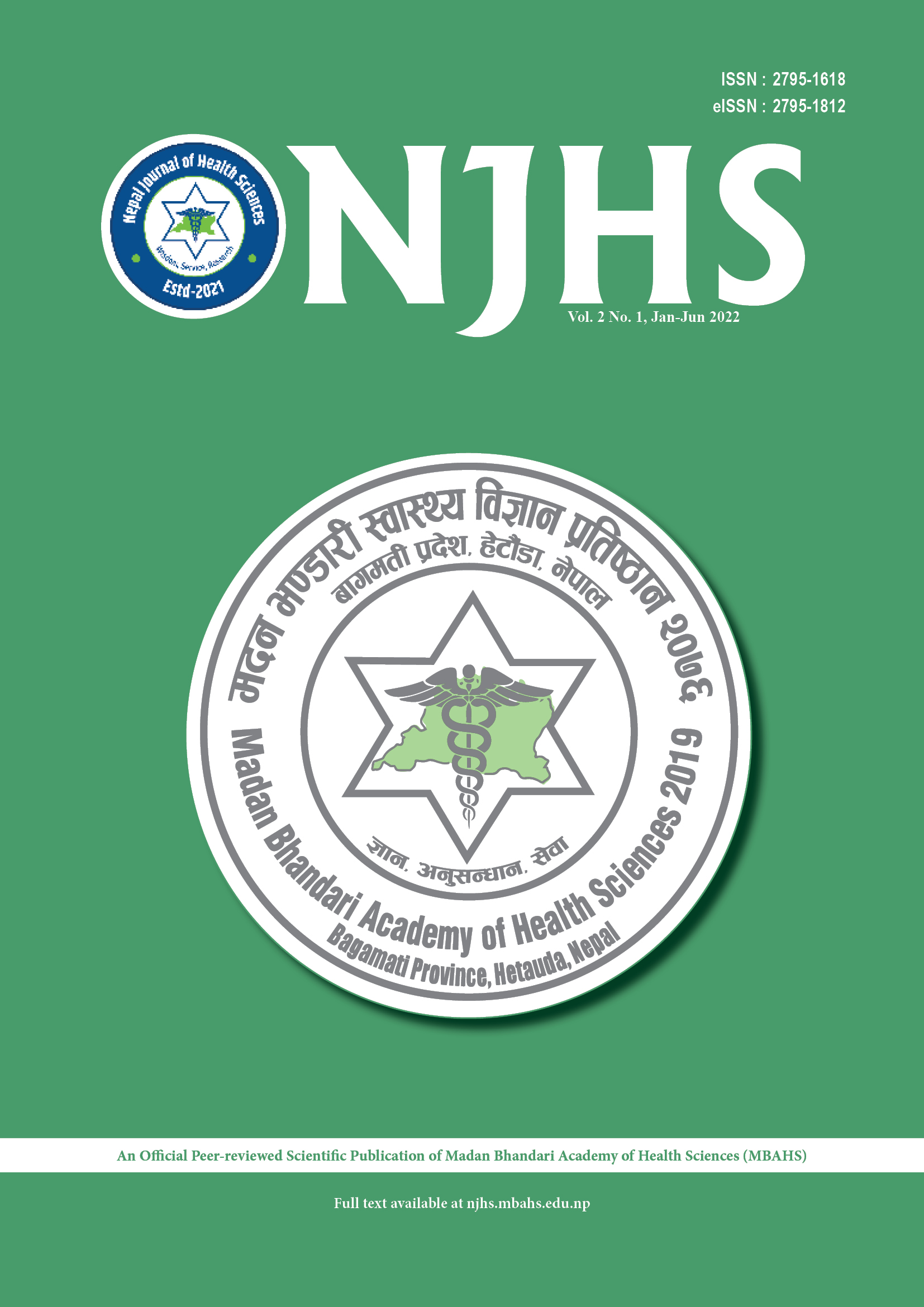External Dacryocystorhinostomy Surgery at Biratnagar Eye Hospital, Nepal
DOI:
https://doi.org/10.3126/njhs.v2i1.47155Keywords:
External dacryocystorhinostomy, nasolacrimal duct obstruction, surgical successAbstract
Introduction: Nasolacrimal duct obstruction at the junction of the lacrimal sac and nasolacrimal duct causes acute or chronic dacryocystitis. Dacryocystorhinostomy (DCR) is the treatment of choice and has a high success rate.
Objective: To analyze the success rate of external DCR surgery and its influencing factors at our hospital.
Methods: It is a hospital-based descriptive study of cases that underwent external DCR surgery from June 2016 to February 2017 at Biratnagar eye hospital. The demographic data were recorded and the successful outcome of the surgery along with its influencing factors -tube status, operating surgeons, and gender was analyzed. The main outcome measure was defined as a patent lacrimal passage on syringing at 6 months postoperatively. Chi-square and Fisher’s exact test were used for statistical analysis.
Results: In total 317 patients, the mean age of the patients was 38.46 (SD ± 13.6) years. The male to female ratio was 1:2.5. The commonest presenting symptom was watering with discharge in 224 (70.6%) patients. Of the total, 195(61.5%) had undergone the DCR surgery with intubation and 122 (38.5%) without intubation. Only 114 (35.9%) patients were followed up for 6 months. The success rate was 86.8%. Postoperative wound infection, bleeding or cheese wiring of the punctum was not seen. No statistically significant factors were seen to influence the success rate of DCR surgery.
Conclusions: External DCR surgery has a high success rate and no significant influencing factors were found to define its success in this study.





